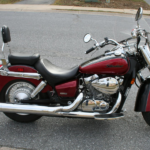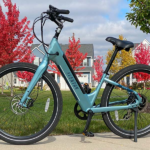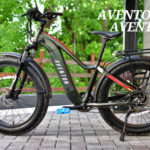Guide to Measuring a Bike in 5 Easy Steps
Measuring a bike correctly is crucial to ensuring a comfortable and efficient ride. Whether you’re buying a new bike, adjusting your current bicycle, or checking its size for a rider, accurate dimensions are key. This guide will walk you through how to evaluate a bicycle in 5 simple steps, helping you find the perfect fit.
1. Measure the Frame Size
- The frame size is one of the most important measurements for determining bike fit.
- To evaluate, stand the bicycle upright. Use a tape measure to record the distance from the center of the bottom bracket (the part where the pedal cranks attach) to the top of the seat tube (the tube that holds the seat post).
- Frame sizes are typically listed in inches or centimeters, depending on the manufacturer. For example, road bikes often have a smaller frame size than mountain bikes, so knowing the exact size helps you select the right bike for your needs.
2. Check the Standover Height
- Standover height is the distance between the top tube (the horizontal bar between the seat and the handlebars) and your inseam.
- Stand over the bicycle with your feet flat on the ground and ensure there’s at least 1-2 inches of clearance between your inseam and the top tube.
- This clearance ensures that the bike is comfortable to mount and dismount, especially when riding on rough terrain.
3. Measure the Top Tube Length
- The top tube length affects your riding posture and reach to the handlebars.
- To evaluate the top tube length, measure horizontally from the center of the seat tube (where the seat post enters the frame) to the center of the head tube (where the handlebars attach).
- A bicycle with the right top tube length helps maintain a relaxed and efficient riding position, preventing strain on your back and arms.
4. Handlebar Height and Width
- Handlebar The Measurements of the handlebars affect how comfortable and controllable your bike is overall.
- Measure the distance between the ground and the top of the handlebars to determine the height.
- To determine breadth, measure the distance between the handlebar’s ends. Better control during rides is ensured by a handlebar that is the right size, matching your shoulder breadth.
5. Saddle Height
• A proper saddle height is essential for both injury prevention and effective pedaling.
• To test, set the saddle so that, while the pedal is at its lowest position, your leg is slightly bent.
•Measure from the saddle’s top to the middle of the bottom bracket. By doing this, you can be confident that the saddle height suits your riding style and leg length.
















